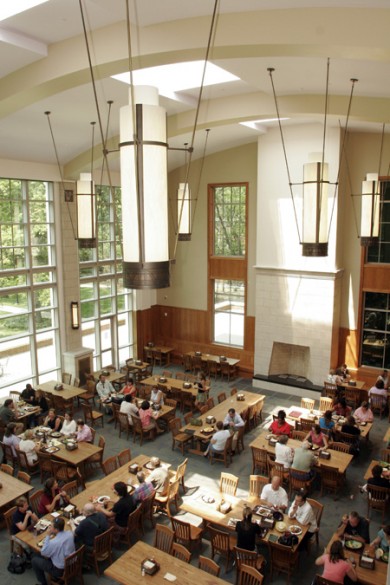
The top floor of The Commons Center recently achieved LEED (Leadership in Energy and Environmental Design) Gold Certification from the U.S. Green Building Council, making it the 13th certified project on campus.
The Commons Center was originally constructed in 2008 and is comprised of four stories. The basement, first and second floors were built out and achieved LEED Gold Certification in 2008 while the top third floor was originally left as an empty shell space, pending the need in the future to be built out to accommodate the growing university. The newly completed third floor comprises 25,560 square feet and is now home to the department of Political Science, which includes the Center of the Study of Democratic Institutions, the Latin American Public Opinion Project, and the Research on Individuals, Politics and Society Lab.
“This project was important to the future of Political Science department here at Vanderbilt University. It was our first introduction of being involved in a LEED certified facility. As such, it was a true learning experience on our end and we are so glad to learn that our new space has met these high standards. Needless to say, we were all pleased to be part of such a well-run process,” said John Geer, chair of the Political Science Department.

Hans Mooy, project manager in Campus Planning and Construction, said, “For me this particular project was very exciting to work on. I instructed the design team at the beginning of the project to achieve Silver Certification. By thinking outside the box, we had enough points for a Gold Certification and almost achieved Platinum. I am very proud of each team member’s hard work and determination for Vanderbilt University’s most recent LEED Certification.”
To achieve this high level of certification, 75.36 percent of the total building materials were manufactured locally, and 31.02 percent of the total building materials were local. Potable water use was reduced by 38 percent from the calculated baseline design through the installation of low-flow toilets, waterfree urinals, and low-flow sinks.
Additionally, an innovative green housekeeping program was implemented, and recycled content and low-vapor emitting materials were used during construction.
For more information on Vanderbilt’s green building program, visit SustainVU.
Contact: sustainvu@vanderbilt.edu